Cutting Board Know-How
Let’s talk about cutting boards. We all have one or two or five.
First, a prepping tip. Have you ever had the experience of prepping your vegetables or fruit and had trouble keeping the board in place? It’s a fairly common occurrence.
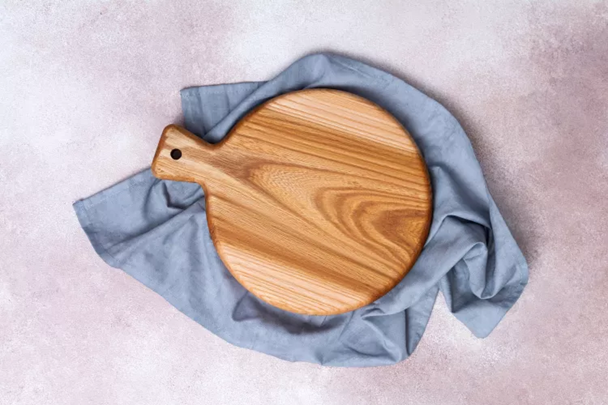
Did you know you can stabilize it by placing a damp towel underneath it? Thinner towels work best because they won’t raise your cutting board up and are less likely to create an uneven work surface. You can even use a slightly damp paper towel under the board to keep it in place.
The reason this works is because the wet towel causes enough friction to keep the board from sliding around. And of course, with a board securely in place, there are less chances of knife accidents and produce falling onto the floor.
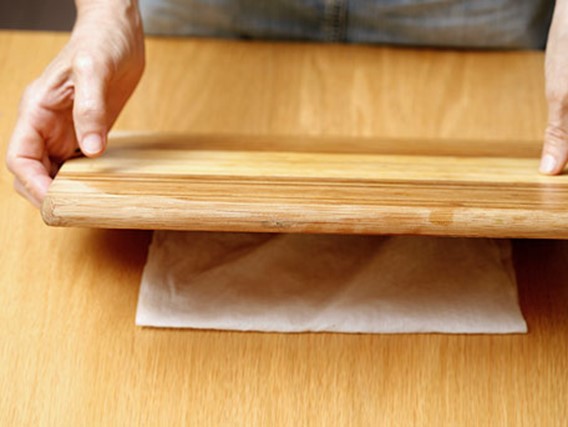
Next, maintaining your board(s). there is one step you really should never skip when it comes to preparing a meal: oiling your wooden cutting boards.
If you’re not currently doing this with your wooden items, seriously consider doing so, because it’s a total game changer. It’s just sad when a board splits, cracks, or has a noticeable white cast.
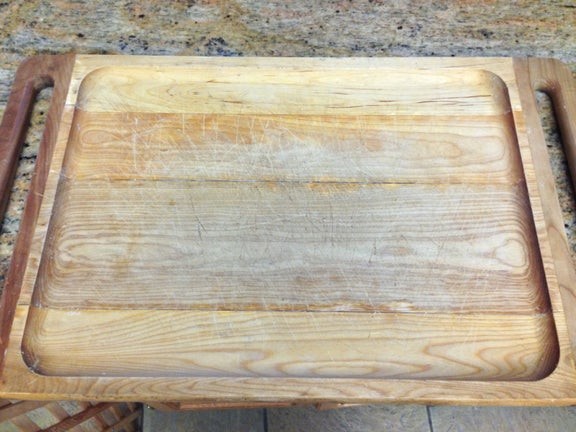
Oiling your cutting board prevents the wood from drying out and splitting and helps make the wood less permeable. Basically, if you’re not oiling your cutting board, the wood becomes more porous and food particles and liquids get trapped beneath the surface. That provides a breeding ground for bacteria, which can get back into your food the next time you use it.
The good news is, it doesn’t matter how old your cutting board is or if you’ve never oiled it before—it’s never too late to add this conditioning step to your cooking process.
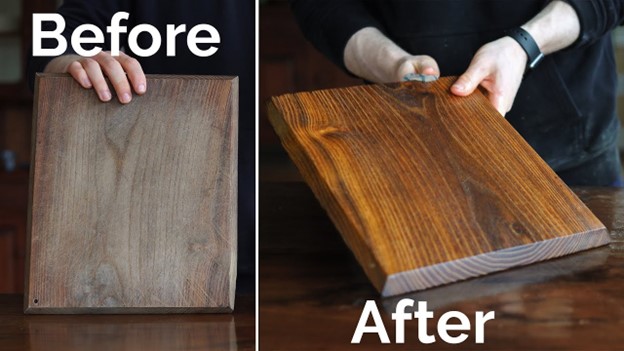
Start by washing your board with a gentle soap and let it completely dry. You can towel-dry your board or let it air dry for at least an hour. You can also wash your board with a lemon and a little bit of baking soda.
Once clean and completely dry, it’s time to oil. Mineral oils or organic waxes (such as beeswax) are the very best choice. You can find affordable mineral oil options that are made especially for cutting boards on Amazon or at most major retailers. Never oil wooden cutting boards with olive oil or any vegetable oil. Doing so will contaminate them over time. A contaminated board tends to carry an unpleasant smell and will also impact how the foods you cut or serve on it taste.
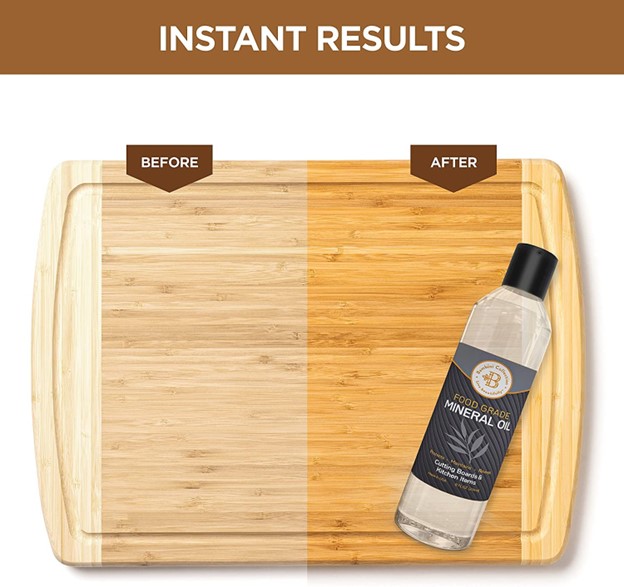
To oil, drizzle it onto the entire surface, and rub it in using a dry paper towel. Let it sit for about an hour, then wipe away any excess oil with another paper towel.
It’s worth the extra time and effort to care for your boards. Besides keeping them sanitary, oiling makes them prettier. And pretty boards can pair nicely with the rest of your kitchen decor and complement any interior style.
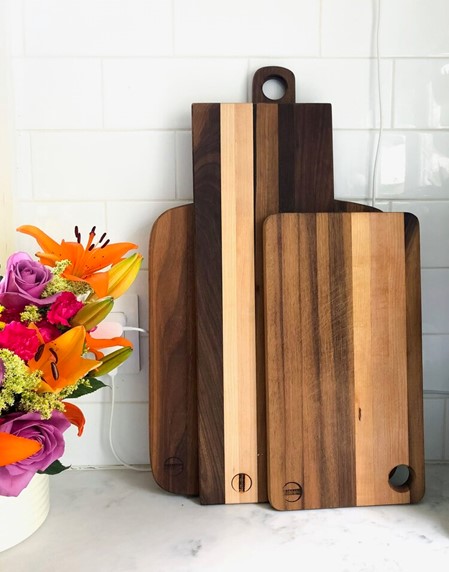
They also look great propped up on a shelf or countertop next to colorful appliances or a vase of flowers. And lastly, when they look nice they make lovely serving or charcuterie boards!
First, a prepping tip. Have you ever had the experience of prepping your vegetables or fruit and had trouble keeping the board in place? It’s a fairly common occurrence.

Did you know you can stabilize it by placing a damp towel underneath it? Thinner towels work best because they won’t raise your cutting board up and are less likely to create an uneven work surface. You can even use a slightly damp paper towel under the board to keep it in place.
The reason this works is because the wet towel causes enough friction to keep the board from sliding around. And of course, with a board securely in place, there are less chances of knife accidents and produce falling onto the floor.

Next, maintaining your board(s). there is one step you really should never skip when it comes to preparing a meal: oiling your wooden cutting boards.
If you’re not currently doing this with your wooden items, seriously consider doing so, because it’s a total game changer. It’s just sad when a board splits, cracks, or has a noticeable white cast.

Oiling your cutting board prevents the wood from drying out and splitting and helps make the wood less permeable. Basically, if you’re not oiling your cutting board, the wood becomes more porous and food particles and liquids get trapped beneath the surface. That provides a breeding ground for bacteria, which can get back into your food the next time you use it.
The good news is, it doesn’t matter how old your cutting board is or if you’ve never oiled it before—it’s never too late to add this conditioning step to your cooking process.

Start by washing your board with a gentle soap and let it completely dry. You can towel-dry your board or let it air dry for at least an hour. You can also wash your board with a lemon and a little bit of baking soda.
Once clean and completely dry, it’s time to oil. Mineral oils or organic waxes (such as beeswax) are the very best choice. You can find affordable mineral oil options that are made especially for cutting boards on Amazon or at most major retailers. Never oil wooden cutting boards with olive oil or any vegetable oil. Doing so will contaminate them over time. A contaminated board tends to carry an unpleasant smell and will also impact how the foods you cut or serve on it taste.

To oil, drizzle it onto the entire surface, and rub it in using a dry paper towel. Let it sit for about an hour, then wipe away any excess oil with another paper towel.
It’s worth the extra time and effort to care for your boards. Besides keeping them sanitary, oiling makes them prettier. And pretty boards can pair nicely with the rest of your kitchen decor and complement any interior style.

They also look great propped up on a shelf or countertop next to colorful appliances or a vase of flowers. And lastly, when they look nice they make lovely serving or charcuterie boards!
 Alice Osborne
Alice Osborne
Weekly Newsletter Contributor since 2006
Email the author! alice@dvo.com
